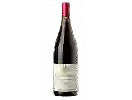
Domaine de CrayBrut de Cray Réserve
This wine is a blend of 3 varietals which are the Chardonnay, the Chenin blanc and the Pinot noir.
This wine generally goes well with fruity desserts, pork or vegetarian.
Wine flavors and olphactive analysis
On the nose the Brut de Cray Réserve of Domaine de Cray in the region of Loire Valley often reveals types of flavors of non oak, microbio or tree fruit and sometimes also flavors of citrus fruit.
Food and wine pairings with Brut de Cray Réserve
Pairings that work perfectly with Brut de Cray Réserve
Original food and wine pairings with Brut de Cray Réserve
The Brut de Cray Réserve of Domaine de Cray matches generally quite well with dishes of veal, pork or game (deer, venison) such as recipes of potjevlesch (northern france), pork colombo or stuffed rabbit in the oven.
Details and technical informations about Domaine de Cray's Brut de Cray Réserve.
Discover the grape variety: Chardonnay
The white Chardonnay is a grape variety that originated in France (Burgundy). It produces a variety of grape specially used for wine making. It is rare to find this grape to eat on our tables. This variety of grape is characterized by small bunches, and small grapes. White Chardonnay can be found in many vineyards: South West, Burgundy, Jura, Languedoc & Roussillon, Cognac, Bordeaux, Beaujolais, Savoie & Bugey, Loire Valley, Champagne, Rhone Valley, Armagnac, Lorraine, Alsace, Provence & Corsica.
Informations about the Domaine de Cray
The Domaine de Cray is one of of the world's greatest estates. It offers 24 wines for sale in the of Loire Valley to come and discover on site or to buy online.
The wine region of Loire Valley
The Loire Valley is a key wine region in western France. It follows the course of the Loire River on its Long journey through the heart of France, from the inland hills of the Auvergne to the plains of the French Atlantic coast near Nantes (Muscadet country). Important in terms of quantity and quality, the region produces large quantities (about 4 million h/l each year) of everyday wines, as well as some of France's greatest wines. Diversity is another of the region's major assets; the styles of wine produced here range from the light, tangy Muscadet to the Sweet, honeyed Bonnezeaux, the Sparkling whites of Vouvray and the juicy, Tannic reds of Chinon and Saumur.
News related to this wine
At the heart of the terroirs of Mâcon-Charnay-les-Mâcon
Sequence from the video « At the heart of the Mâcon terroir » which offer a stroll at the heart of the Mâcon terroir. It offers a focus on Mâcon-Charnay-les-Mâcon, one of the 27 geographical denominations of the Mâcon appellation. Travel through the terroirs of the Mâcon appellation by watching the full video : https://www.youtube.com/watch?v=GF20y1aBZh8 Both are available in French and English. Our social media: Facebook: https://www.facebook.com/BourgogneWines Twitter: https://twitter.com/Bo ...
The Mâcon plus appellation seen by Charles Lamboley
Charles Lamboley, marketing and communication director from Vignerons des Terres Secrètes, explains the differences between the appellation Mâcon-Villages and Mâcon plus a geographical denomination. This video is taken from the “Rendez-vous avec les vins de Bourgogne” program (March 2020). The Bourgogne Wine Board (BIVB) invites you to enjoy this video in which Jean-Pierre Renard, Expert Instructor at the Ecole des Vins de Bourgogne, explains the topographical and geological characteristics of t ...
The Rully appellation investigated through its geology and geography
The Bourgogne Wine Board (BIVB) invites you to enjoy this video in which Jean-Pierre Renard, Expert Instructor at the Ecole des Vins de Bourgogne, explains the topographical and geological characteristics of the Rully appellation. Here the vineyard is planted on different hills which have very different gelogicial characteristics. It partly explains the great diversity in the expression of the Rully wines. This video is taken from the “Rendez-vous avec les vins de Bourgogne” program (February 20 ...
The word of the wine: Mercaptan
Organic compound resulting from the combination of alcohol and sulphide (H2S) producing an unpleasant odour reminiscent of town gas and rotten eggs.














